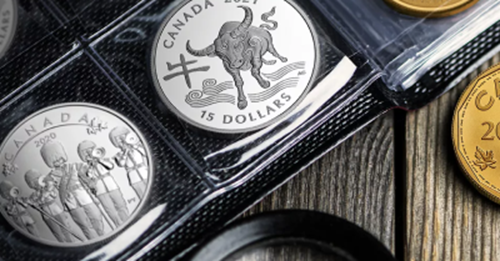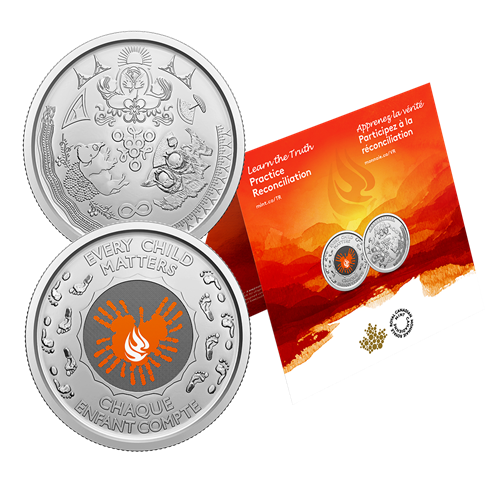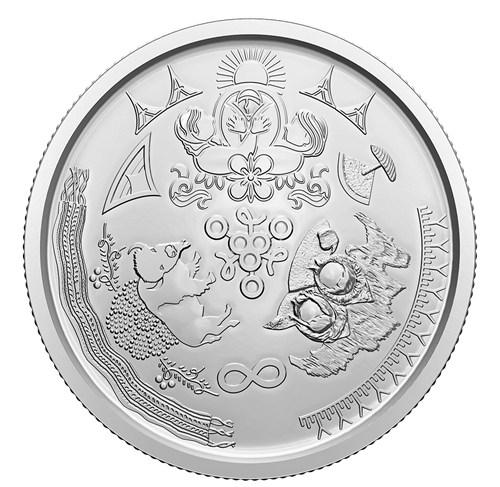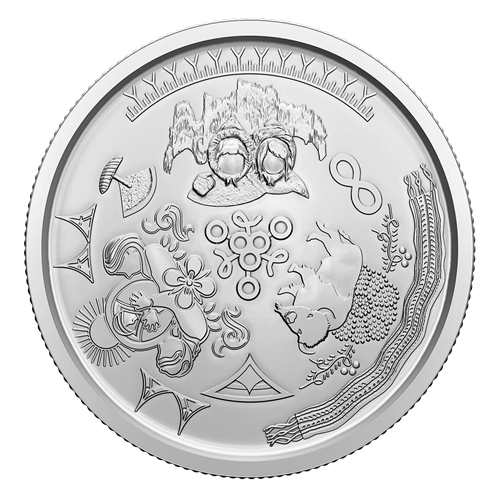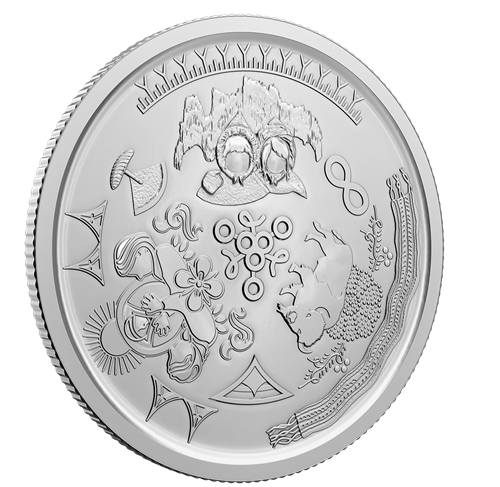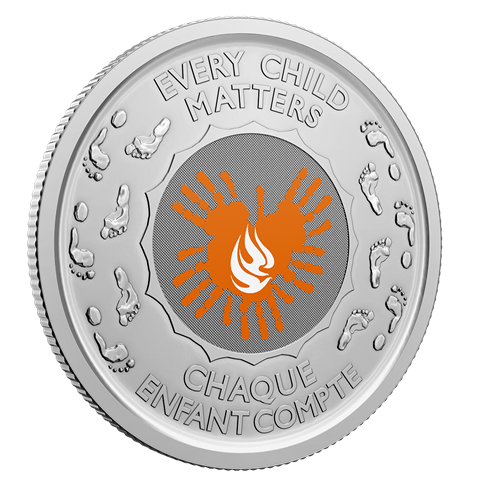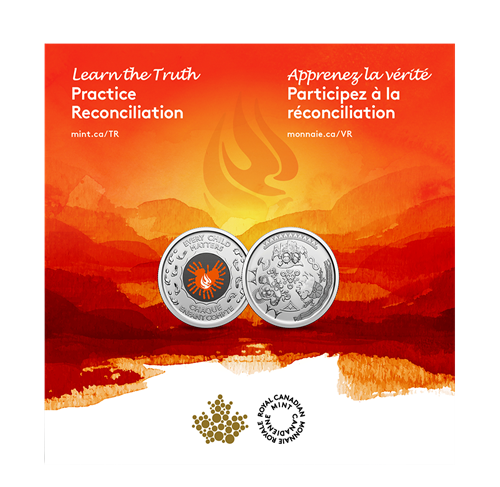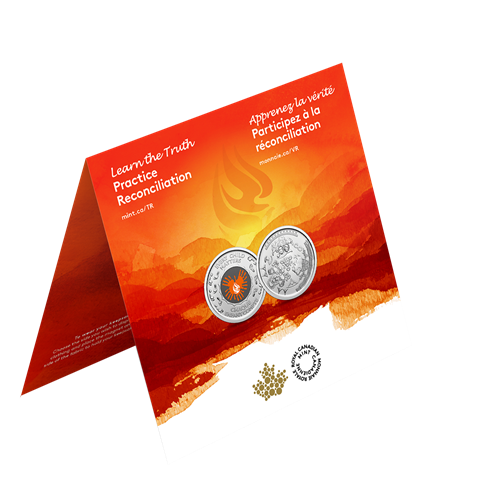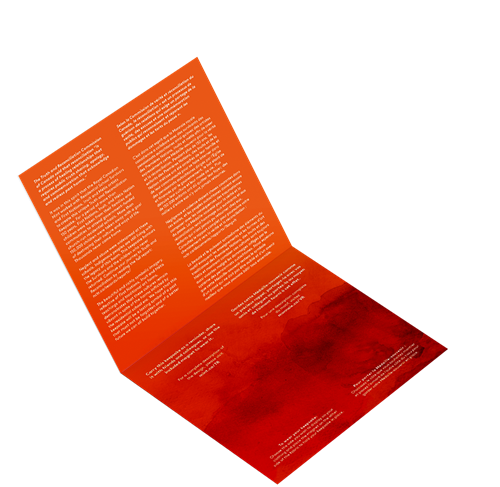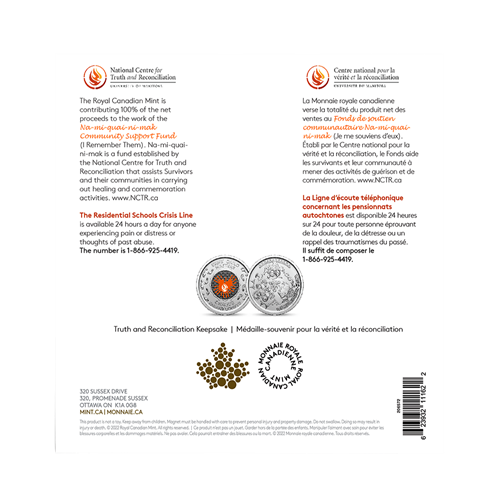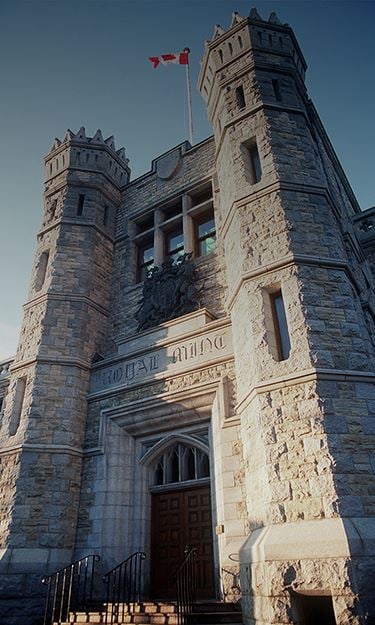About the Truth and Reconciliation Keepsake design
On one side of the keepsake, the assertion “EVERY CHILD MATTERS” appears in English and French. To the left and right we see pairs of footprints, representing ancestors walking with younger generations. At the centre of it all, orange-coloured hand prints form the shape of the sun—the life-giving source of light and heat. Within the hands is the flame motif from the National Centre for Truth and Reconciliation logo, an acknowledgement of the spiritual flame that is born inside a person, while the hands are encircled by a border representing the radiating waves of the sun’s light and heat.
The other side of the keepsake is a collection of visual elements that form an expression of Indigenous cultures and perspectives, as designed by artists Leticia Spence (First Nations), Jason Sikoak (Inuit) and JD Hawk (Métis). Forming an open circle to represent the land and the experiences shared in the vastness of the natural world, the three groupings of visual elements surround a stylized representation of roots and berries that symbolize a spiritual connection to the land, and the sustenance it provides.
First Nations rights, culture and teachings are represented by the natural element of the sun and traditional teepee lodgings; a tikanagan (cradle board) held and supported by two people, as a symbol of connection and traditional family support across generations. This is also supported by symbols of water, and a stylized fireweed flower; and to the left, a triangular motif inspired by parfleche (a rawhide carrying bag) designs.
The Inuit perspective is represented by traditional tattoo line work that was taken away by colonialists and is now coming back as a sign of pride; the northern lights that symbolize Inuit Nunangat and reflect the beauty of the North; a brother and sister—a representation of those who were sent to residential schools—bravely facing the challenge that lies before them; and to the left, an ulu which is a traditional curved knife that is used in the North.
The Métis Nation is represented by the Métis sash that signifies connection—to nature, to the past, to each other; a beadwork flower representing resilience amid thorns that signify pain and suffering; the bison, a symbol of strength and determination, bravely facing east to confront the approaching colonizers; and to the left, the infinity symbol that represents the joining of two cultures, First Nations and European, and their permanent existence as a people.
Acknowledgement
- The Royal Canadian Mint is thankful for the support and contributions the National Centre for Truth and Reconciliation, the Survivor’s Circle, and the Orange Shirt Society have made to this project.
BEHIND CLOSED DOORS
This design represents…


